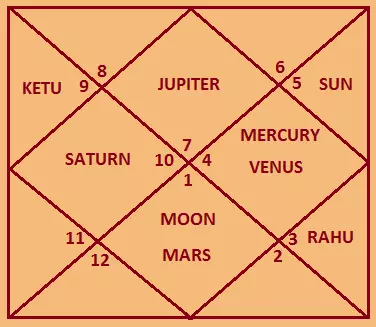Tithi in Panchaang or Jyotish

Best Astrologer in India: - Dr.A.S.Kalra


Tithi in Jyotish or Panchaang
By: - Dr.A.S.Kalra Astrologer
Tithi in Jyotish / Panchaang: -
In Indian Vedic astrology, "Tithi" refers to the lunar day in the Panchang, the traditional Hindu almanac. It is a vital component of Panchang that provides information about the daily lunar phase based on the Moon's relationship with the Sun.Here are some key points about Tithi in Panchang:
Definition:
Tithi is calculated based on the longitudinal distance between the Sun and the Moon. It represents the number of days that have elapsed since the last New Moon (Amavasya) or the Full Moon (Purnima).Duration:
A Tithi can be either of two durations: 12 degrees of the Moon's motion or approximately 24 hours. The exact duration of a Tithi may vary slightly based on the specific time of sunrise and sunset for a particular location.Classification:
Tithis are classified into 30 types, representing the 30 lunar days of a lunar month. Each Tithi is named, starting from Pratipada (first Tithi) to Amavasya (last Tithi of the dark lunar phase) and then from Pratipada to Purnima (last Tithi of the bright lunar phase).Auspiciousness:
Tithis play a significant role in determining the auspiciousness of various activities and events. Some Tithis are considered more favorable for starting new ventures, performing religious rituals, or initiating important tasks, while others may be less auspicious.Connection with Deities:
Each Tithi is associated with specific deities, energies, and planetary influences. Observing rituals, prayers, or specific actions during certain Tithis is believed to enhance their beneficial effects and connect with the associated divine energies.Effects on Birth Charts:
Tithis are considered while analyzing a person's birth chart and determining the planetary influences at the time of birth. The Tithi during birth can provide insights into a person's character, tendencies, and potential life events.Importance in Muhurta:
Tithis are considered when selecting an auspicious time (Muhurta) for various activities. The selection of a favorable Tithi is an important factor in determining the overall auspiciousness of the Muhurta.It's important to note that the effects and significance of Tithis may vary among different astrologers and regions. The overall analysis of an individual's birth chart, along with other factors such as planetary positions, aspects, and Yogas, also plays a significant role in determining the auspiciousness of a particular time or activity.
Consulting with an experienced astrologer can provide a more detailed understanding of Tithis and their specific significance in your life circumstances. They can guide you on selecting favorable Tithis for important events, suggest appropriate actions during specific Tithis, and provide insights based on the principles of Vedic astrology.
Technically, a tithi in Indian Astrology or Jyotish or Panchaang is said to be completed when the phase difference between the positions of Sun & Moon become integral multiple of 12. There are 30 tithis in a Chandra Maas, in which 15 tithis are of Krishna Paksh & 15 are of Shukla Paksh. After an aamavasya, phase difference between Sun & Moon starts increasing & goes to a maximum of 360°. If we divide 360° by 30 then the result comes out to be 12°, which is the value of a tithi.
In Indian Astrology, it is a convention to assume the start of a new tithi at the time of Sun rise irrespective of when the phase difference between Sun & Moon become integral multiple of 12. The tithi lasts till the next Sun rise. It means the tithi present at the time of Sun rise is considered as the tithi till next Sun rise even if the phase difference between the positions of Sun & Moon become integral multiple of 12 at any time after Sun rise.
But due to such an assumption problems arise in determining the dates of various festivals & there is always a state of contradiction among variuos pandits in different parts of the country regarding this. Due to which a festival is sometimes celebrated on two different dates in different parts of the country.
Also due to such a convention, sometimes a tithi gets repeated (which is called as Vridhi tithi) & sometimes it do not comes at all (also called as Kshaya tithi).
| Tithi | Phase difference between Sun & Moon | |
|---|---|---|
| Shukla Paksh | Krishna Paksh | |
| Prathma or Pratipada | 12°×1 =12° | 180° + 12°×1 =192° |
| Dvitiya | 12°×2 =24° | 180°+12°×2 =204° |
| Tritiya | 12°×3 =36° | 180°+12°×3 =216° |
| Chaturthi | 12°×4 =48° | 180°+12°×4 =228° |
| Panchami | 12°×5 =60° | 180°+12°×5 =240° |
| Shashthi | 12°×6 =72° | 180°+12°×6 =252° |
| Saptami | 12°×7 =84° | 180°+12°×7 =264° |
| Ashtami | 12°×8 =96° | 180°+12°×8 =276° |
| Navami | 12°×9 =108° | 180°+12°×9 =288° |
| Dashami | 12°×10 =120° | 180°+12°×10 =300° |
| Ekadashi | 12°×11 =132° | 180°+12°×11 =312° |
| Dvadashi | 12°×12 =144° | 180°+12°×12 =324° |
| Trayodashi | 12°×13 =156° | 180°+12°×13 =336° |
| Chaturdashi | 12°×14 =168° | 180°+12°×14 =348° |
| Poornima or Aamavasya | 12°×15 =180° | 180°+12°×15 =360° or 0° |
